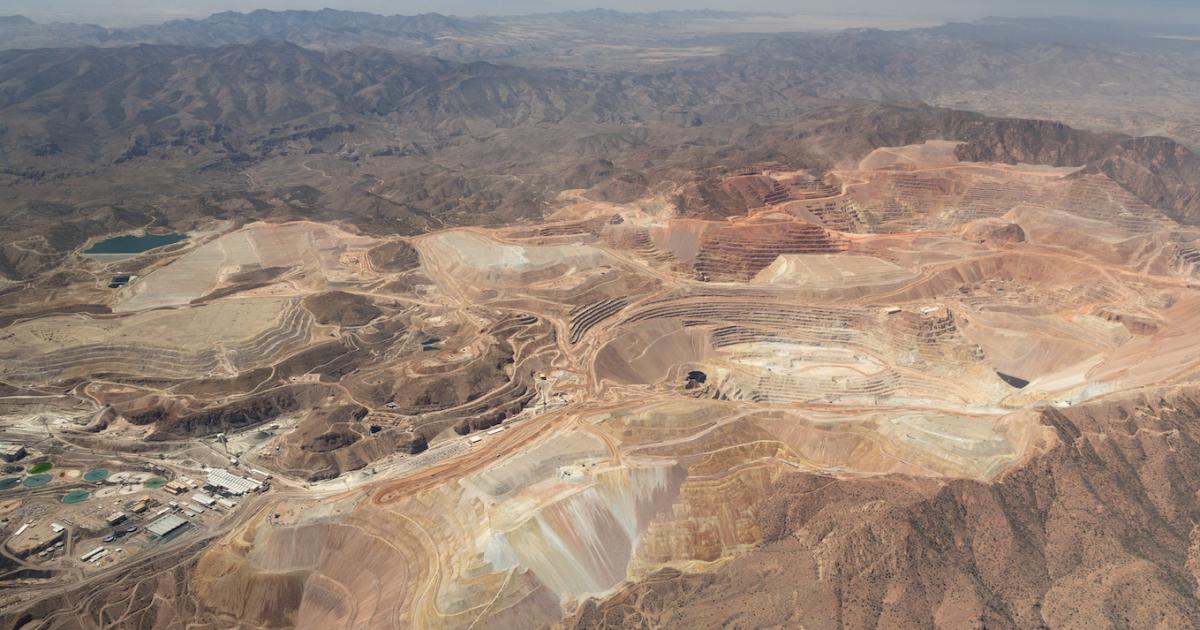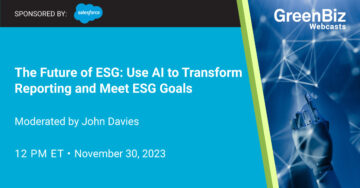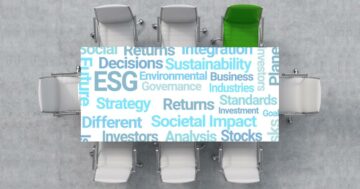
Google is an advocate of “urban mining,” the process of extracting critical minerals such as lithium, cobalt and copper from aging mobile phones, laptops and other devices, and reintroducing them into materials supply chains.
But that won’t be enough to uncover all the minerals and metals to make new Google hardware that is sustainably sourced or to meet the needs of the clean energy systems behind the company’s net-zero goals, according to Mike Werner, head of circular economy for Google. “We’ve done some modeling, and it’s pretty clear that we are not going to reach net zero without significant mining,” Werner told an audience last week at the Circularity 23 conference. “I don’t know that the broad sustainability community has really understood that.”
While Google already “mines” materials from old electronics and appliances, Werner acknowledged it will need to support new extraction activities to keep up with product demand and achieve its net-zero goals. That presents a dilemma for sustainability professionals, because the mining industry is often criticized for questionable environmental and human rights practices.
Werner also said it will take “trillions and trillions of tons” of critical minerals, including rare earth elements such as dysprosium and magnesium, to build technologies crucial for the clean energy transition, including solar panels, wind turbines and batteries for electric vehicles and energy storage. That demand, based on a 2021 analysis by the International Energy Agency, is roughly six to nine times what would be needed to build comparable fossil fuels infrastructure, he said.
Urban mining will become a vital part of materials supply chains, Werner said. After all, it’s the fastest-growing waste stream on the planet (yes, faster than plastic) with more than 50 million tons produced annually. Put another way, that’s like throwing out 1,000 laptop computers per second.
Google’s own programs are a work in progress, but it supports the collection of unwanted electronics in many U.S. households — including televisions. It advocates putting some materials extracted from those gadgets back into its new hardware — as of April, about 30 percent of all the materials used to produce its phones, thermostats, tablet computers, televisions and other devices came from recycled sources. (That includes nonmetals such as glass and plastic.)
Get ready for a new sort of footprinting exercise
But Google isn’t relying solely on that activity. To get a sense of how the looming minerals shortage might affect Google long term, the company is documenting and calculating how many critical minerals the company’s product revenue goals and net-zero commitments require. This benchmarking exercise co-exists with other footprinting activities, such as measuring greenhouse gas emissions or water consumption.
That means studying not just the direct material implications for the hardware devices that Google sells to consumers and the computer servers and networking gear in its data center, but also assessing the potential impact it has on meeting the company’s commitment to using 100 percent carbon-free energy by 2030.
“I would really urge anyone that has a net-zero commitment to do the same,” Werner said.
He suggested engaging corporate procurement teams and CFOs to understand how shortages will affect pricing. Among the questions companies should consider:
- Which e-waste streams could potentially supply the materials your company relies on the most?
- Are the regions where these materials are being sourced subject to geopolitical conflict?
- What are the human rights implications, as well as the impact on Indigenous communities?
- What are the land use, conservation and restoration practices of the mining organizations providing virgin supplies?
- How are your company’s sourcing processes affecting freshwater ecosystems?
The answers to these questions will help inform long-term sourcing strategies, said Werner, reiterating that while urban mining will “play an important role into the market, it is insufficient to meet the demands of net zero.”
That means sustainability professionals must become more comfortable about partnering with mining companies, advocating for policies that accelerate permitting for operations that are prioritizing ethical and sustainable ways for mining. Among the resources that could help steer those strategies are the International Council on Mining and Metals, representing companies including Alcoa, Anglo American and Rio Tinto that have agreed to a set of 39 practices meant to minimize the impact of mining on society; and the Responsible Minerals Initiative, which represents 400 companies that have agreed to support responsible mineral production and sourcing.
“We need to find better ways of taking these minerals out of the ground and putting them into the economy,” Werner said.
Consider just one of those metals: copper, which is vitally important for wiring, cables and other electrical infrastructure.
It takes an average of 17 years to develop a new copper mine, Werner said, suggesting that humanity is already far behind in making the investments required to ramp up virgin production. Consider that over the past 40,000 years, about 700 million metric tons of copper have been mined. Almost double that amount, or 1.2 billion metric tons, will be needed to meet the demands of the clean energy transition, Werner said.
“I don’t really think that our community within circularity and sustainability really understands the gravity of the situation, and it’s going to mean that driving clean energy and driving aspects of mining infrastructure is really, really important,” he said.
- SEO Powered Content & PR Distribution. Get Amplified Today.
- EVM Finance. Unified Interface for Decentralized Finance. Access Here.
- Quantum Media Group. IR/PR Amplified. Access Here.
- PlatoAiStream. Web3 Data Intelligence. Knowledge Amplified. Access Here.
- Source: https://www.greenbiz.com/article/google-exec-significant-mining-key-net-zero
- :has
- :is
- :not
- :where
- $UP
- 000
- 1
- 1.2 billion
- 100
- 17
- 2021
- 2030
- 23
- 30
- 39
- 40
- 50
- a
- About
- accelerate
- According
- Achieve
- acknowledged
- activities
- activity
- advocate
- advocates
- advocating
- affect
- affecting
- After
- agency
- Aging
- All
- already
- also
- American
- among
- amount
- an
- analysis
- and
- Annually
- Another
- answers
- anyone
- appliances
- April
- ARE
- article
- AS
- aspects
- Assessing
- At
- audience
- average
- back
- based
- batteries
- BE
- because
- become
- been
- behind
- being
- benchmarking
- Better
- Billion
- broad
- build
- but
- by
- cables
- calculating
- came
- Catch
- Center
- CFOs
- chains
- circular economy
- clean energy
- clear
- collection
- comfortable
- commitment
- commitments
- Communities
- community
- Companies
- company
- Company’s
- comparable
- computer
- computers
- conflict
- CONSERVATION
- Consider
- Consumers
- consumption
- Copper
- Corporate
- could
- Council
- critical
- crucial
- data
- Data Center
- Demand
- demands
- develop
- Devices
- direct
- do
- done
- Dont
- double
- driving
- earth
- economy
- Ecosystems
- Electric
- electric vehicles
- Electronics
- elements
- Emissions
- energy
- engaging
- enough
- environmental
- Ether (ETH)
- ethical
- Event
- Exercise
- extraction
- far
- faster
- Find
- For
- fossil
- fossil fuels
- from
- fuels
- Gadgets
- GAS
- Gear
- geopolitical
- get
- glass
- Goals
- going
- gravity
- greenhouse gas
- Greenhouse gas emissions
- Ground
- Hardware
- hardware devices
- Have
- he
- head
- help
- households
- How
- HTTPS
- human
- human rights
- Humanity
- i
- Impact
- implications
- important
- in
- includes
- Including
- industry
- inform
- Infrastructure
- International
- into
- Investments
- IT
- ITS
- jpg
- just
- just one
- Keep
- Key
- Know
- Land
- laptop
- laptops
- Last
- like
- lithium
- Long
- long-term
- looming
- make
- Making
- many
- Market
- material
- materials
- mean
- means
- meant
- measuring
- Meet
- meeting
- Metals
- metric
- might
- mike
- million
- mined
- mineral
- minerals
- mines
- minimize
- Mining
- Mining Companies
- Mining Industry
- missed
- Mobile
- mobile phones
- modeling
- more
- most
- must
- Need
- needed
- needs
- net
- net-zero
- networking
- New
- new hardware
- node
- of
- often
- Old
- on
- ONE
- Operations
- or
- organizations
- Other
- our
- out
- over
- own
- panels
- part
- partnering
- past
- percent
- phones
- planet
- plastic
- plato
- Plato Data Intelligence
- PlatoData
- Play
- policies
- potential
- potentially
- practices
- presents
- pretty
- pricing
- prioritizing
- process
- processes
- produce
- Produced
- Product
- Production
- professionals
- Programs
- Progress
- providing
- put
- Putting
- Questions
- Ramp
- RARE
- reach
- ready
- really
- regions
- reiterating
- relying
- representing
- represents
- require
- required
- Resources
- responsible
- restoration
- revenue
- rights
- Role
- roughly
- s
- Said
- same
- Second
- Sells
- sense
- Servers
- set
- shortage
- shortages
- should
- significant
- situation
- SIX
- Society
- solar
- solar panels
- solely
- some
- sourced
- Sources
- Sourcing
- storage
- strategies
- streams
- Studying
- subject
- such
- supply
- Supply chains
- support
- Supports
- Sustainability
- sustainable
- Systems
- Tablet
- Take
- takes
- taking
- teams
- Technologies
- term
- than
- that
- The
- Them
- These
- Think
- this
- those
- Throwing
- times
- to
- tons
- transition
- trillions
- u.s.
- uncover
- understand
- understands
- understood
- unwanted
- urban
- use
- used
- using
- Vehicles
- Virgin
- vital
- Waste
- Water
- Way..
- ways
- we
- week
- WELL
- What
- which
- while
- will
- wind
- with
- within
- without
- Work
- would
- years
- yes
- Your
- zephyrnet
- zero









